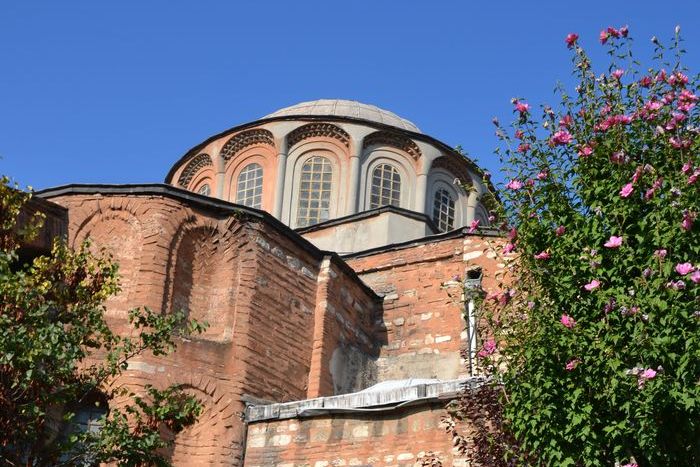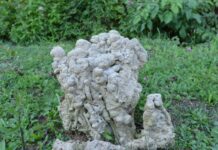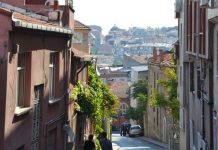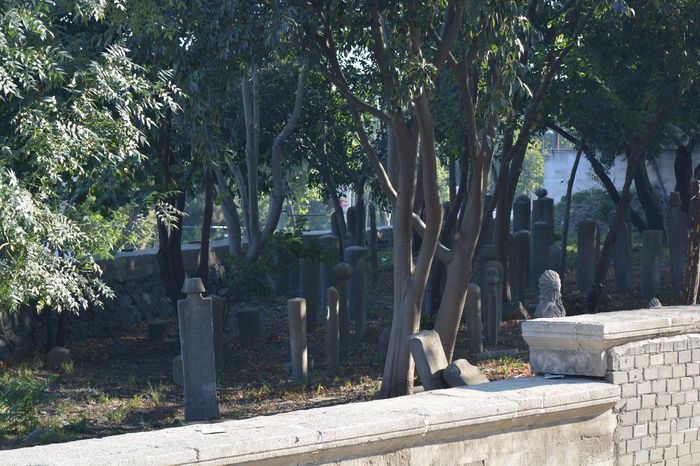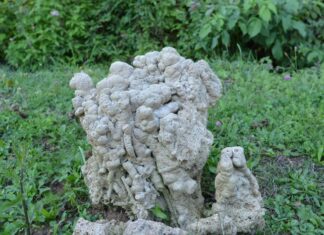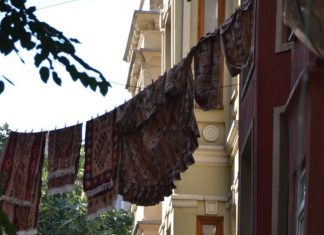For ten years, Polyeuctos’s church was the biggest and best ever seen, and Juliana died in 528 before she saw her church outstripped in grandeur. When she died, her eunuchs left Constantinople to become monks at the monastery of Saint Sabas in Jerusalem, a notorious hotbed of her Chalcedonian religious views.
Juliana herself is memorialized and pictured in one of the most dazzling surviving late antique manuscript books, the Materia Medica of Dioscorides, in a copy now in Vienna, written for and dedicated to Juliana as patron. This lavish book is a copy of the handbook of drugs and remedies that Dioscoridesan intrepid traveler in the Greek world—originally wrote around 65 CE. Nearly 400 color illustrations show us plants in loving detail, each one facing a page of text describing its medical powers,
with the original material from Dioscorides supplemented, rearranged, and revised. An illustrated handbook of Mediterranean birds is also included. Materia Medica was still in Constantinople when the city fell to the Turks in 1453 and eventually came into the possession of Suleiman the Magnificent’s Jewish physician. Emperor Maximilian II purchased it at a vast price and brought it to his library in Vienna, where the book remains to this day, having resided for 1,500 years in only the two imperial cities.
Justinian accused her son Olybrius
Four years after Juliana died, Justinian accused her son Olybrius of plotting against him and sent him into exile, confiscating his wealth. Although he was eventually restored to favor, Olybrius vanishes from history. A son or nephew, another Areobindus, married Justinian’s niece Praeiecta and went out to fight the Moors in Africa in the 540s, a decade after Justinian thought he had successfully recaptured that province. This Areobindus played a double game in Africa, recruiting and then betraying different Moorish leaders. Seeking refuge in the bishop’s monastery in Carthage, he was received with all state and assured of his safety, then murdered in his bed there the same night. That is the last trace of the family except for the church Juliana built bulgaria private tours kazanlak.
The city was full of churches, and getting fuller. In the mid-fifth century, near the head of the Golden Horn and thus outside the original Constantinian city, a church dedicated to the Virgin had been built at Blachernae. During the reign of Emperor Leo I (457-474), it was privileged to become the place of repose for an astonishing relic, the robe of the Virgin herself, and so by about 500 the court had built there a subsidiary palace for emperors and their families.
Such a gesture is religious in many ways, not least for the statement it made about the Virgin’s lofty dignity in a period when, as we have seen, some people thought her a mere woman and unworthy of the title “God’s mother.”6 On the way out to this palace, the church of the Apostles that Justinian built in 550 became the resting place for emperors and a regular site of suitably deferential worship of them: Theodora and then Justinian would both come to lie there—Justinian’s funeral being the occasion of a vast congregation along the main street and the subject of part of an epic poem in honor of Justin II Honoring the martyr Polyeuctos.
Juliana in Constantinople
There were few like Juliana in Constantinople. At Rome, such wealth and ostentation had once been commonplace, and the dwindling senate there acted as if traditional wealth and the privilege of wealth were still in the ascendancy. Constantinople had no such vast fortunes. Gradually the city’s economic position would bring commerce to supplement what empire could do, but until the final collapse of the Ottomans after World War I, this was a city of empire—or rather, a theme park of empire, a place where parts were played, opportunities were seized, and privilege was exercised quite independently of merit. The circus and its factions, the palace with its eunuchs, the churches and their zealot monks and pillar sitters were all part of a never-ending Vanity Fair, a spectacle that enraptured visitors then and enraptures scholars now.
The center of the city stood along the ridge of land that seamen saw as they came up the Sea of Marmara, just before they rounded the Golden Horn to anchorage: the circus, the palace, and the church all appeared there. If the circus had fired the passions of the Romans, it was the center of urban life here at Constantinople. The Reds, the Whites, the Blues, and the Greens were the teams here as well, and the Blues and the Greens dominated, their rivalry driving race fans to frenzy.
In the best of times, the government paid slightly nervous attention to the factions rather in the way British authorities keep a weather eye on soccer thugs. Racing was mainly a harmless sport, but when it sent mobs into the streets, it could begin to look political. Patrons poured money into the circus largely to protect themselves from its mobs, and that in turn reinforced the need for protection. The business of the factions was applause, but they could also withhold it.
